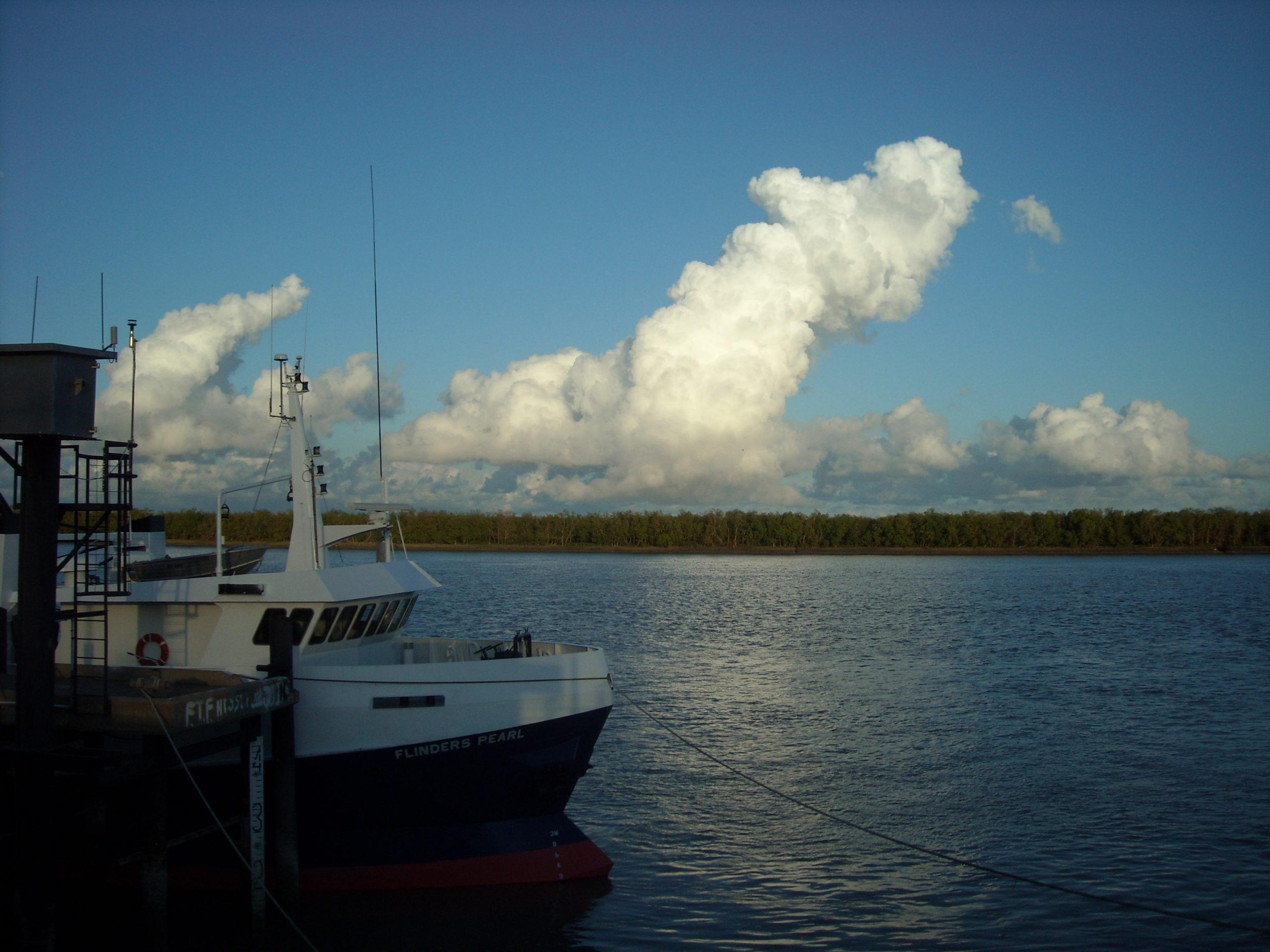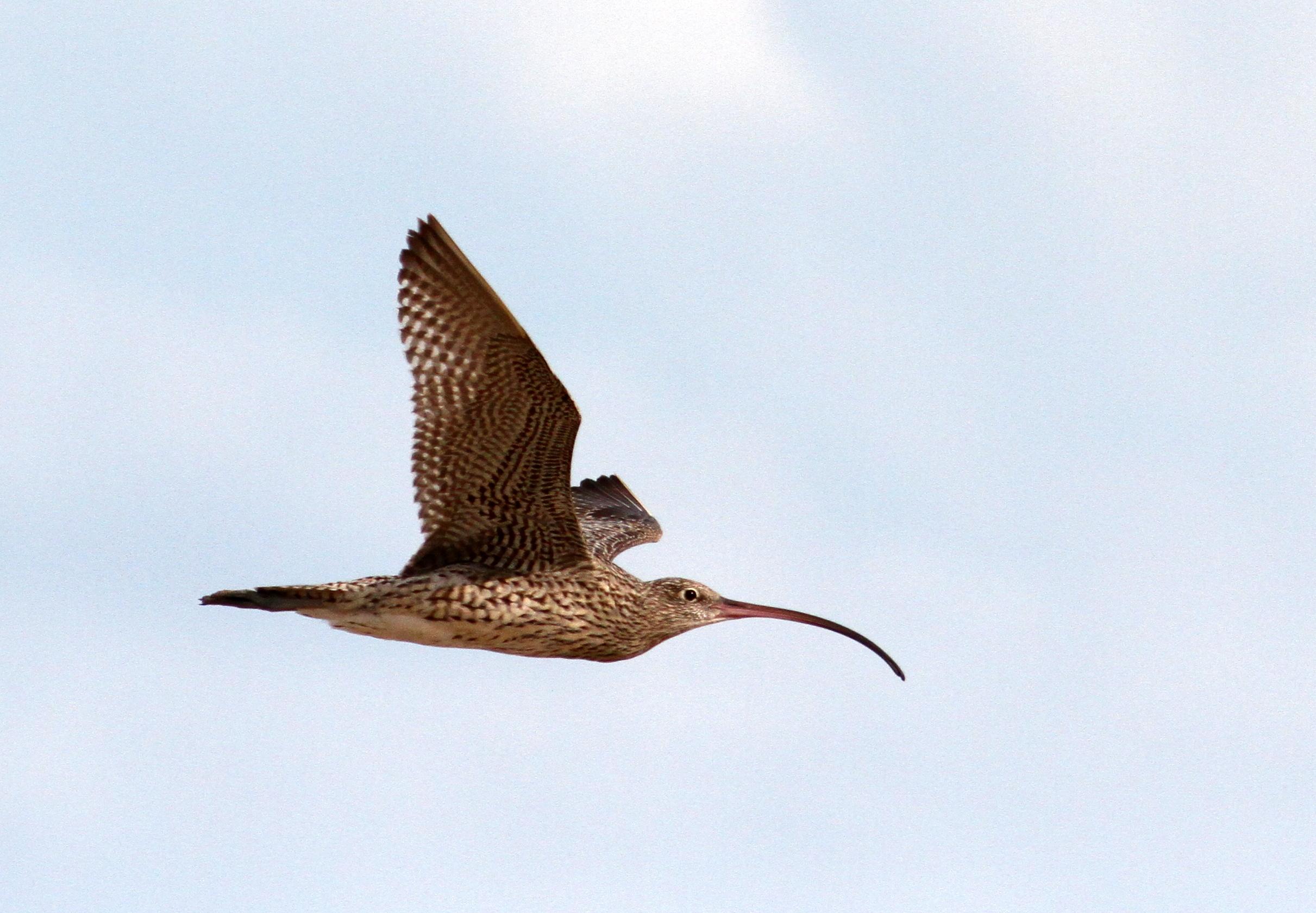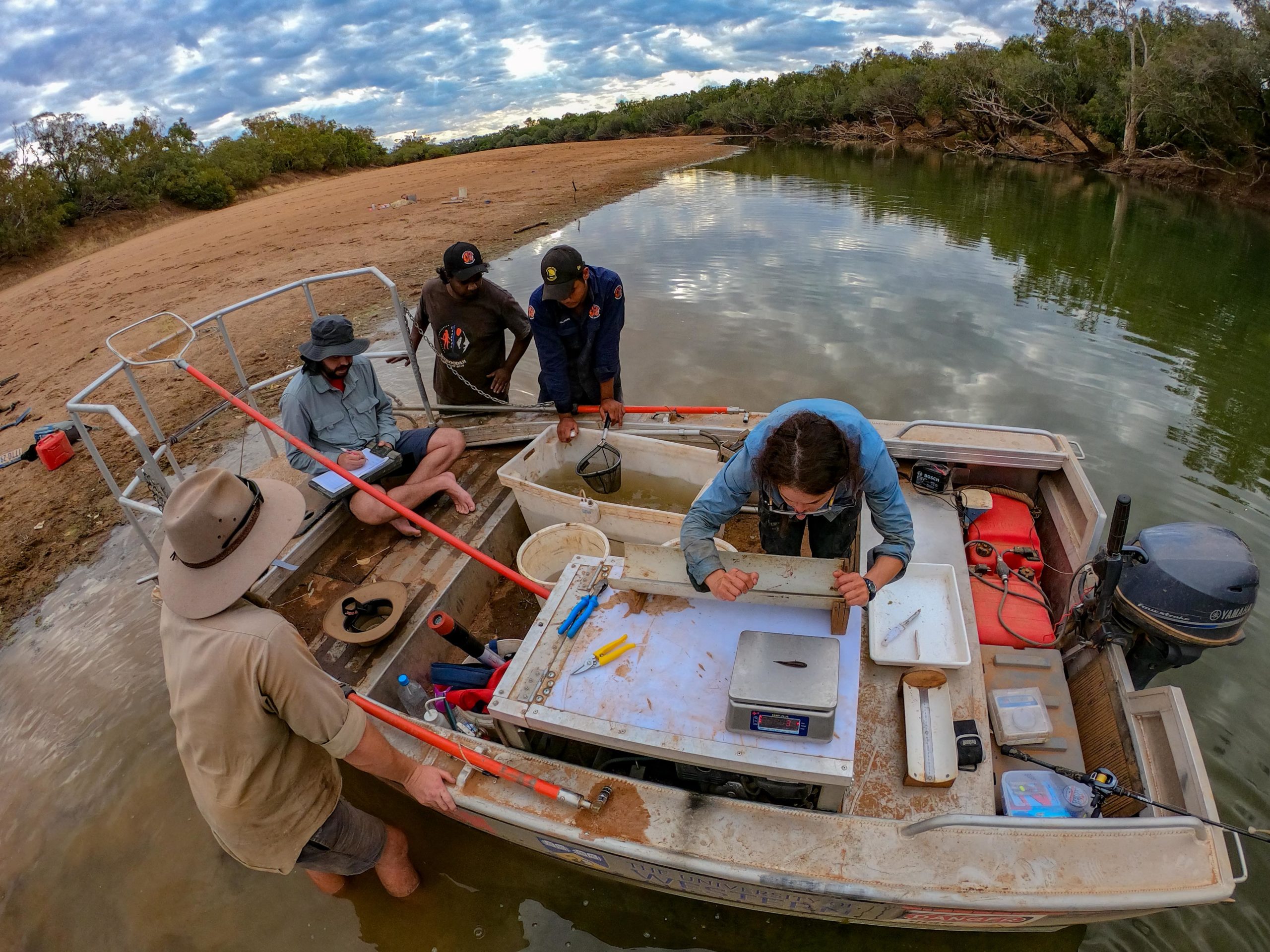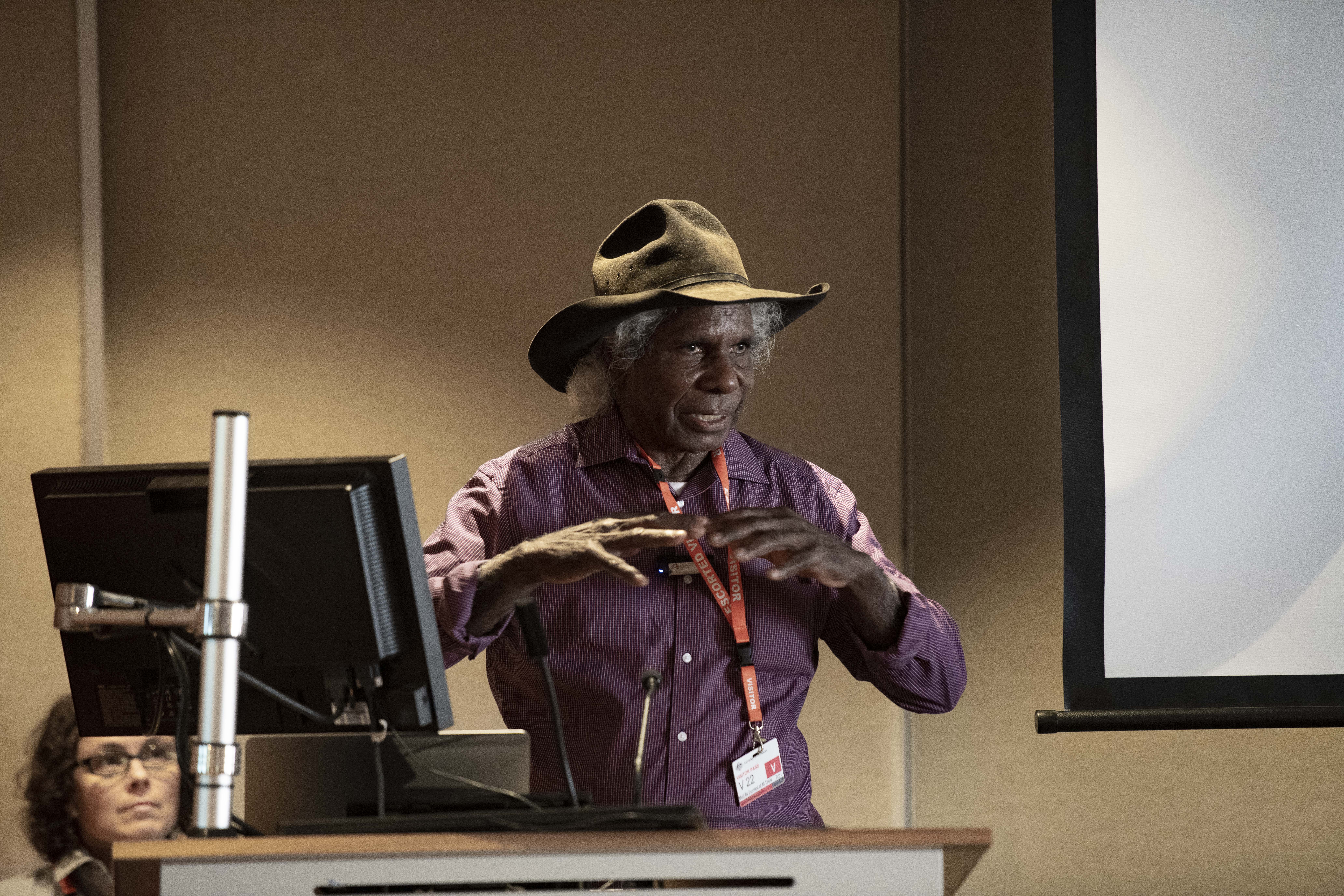River flows in northern Australia support healthy ecosystems that provide a wealth of economic, social and cultural goods and services such as fisheries, recreation and tourism attractions, bush tucker, clean water, fertile floodplains, biodiversity, connections to Country and more. Understanding the links between river flows and healthy ecosystems is critical to determining how much water is needed to maintain these goods and services.
The Northern Australia Environmental Resources Hub is demonstrating the immense value and significance of Australia’s tropical rivers. River flows to the Gulf of Carpentaria sustain commercially important prawn and barramundi fisheries and nourish threatened shorebirds on their long annual migrations. Indigenous peoples’ valued relationships with WA’s Fitzroy River, along with new knowledge of environmental water needs, are informing a series of principles that are being developed for water planning and management to guide sustainable water use in the region. And in a powerful short film from WA’s Kimberley region, senior Gooniyandi artist Mervyn Street has shared the vital significance of the Warlibiddi and Martuwarra (Margaret and Fitzroy rivers) to Country and people’s lives through his art and storytelling.
River flows to the Gulf of Carpentaria are an essential part of the lifecycle of numerous important fishery species, particularly prawns and barramundi. Hub research has built on long-term partnerships with these fisheries to improve understanding of the possible impacts on these fisheries of water extraction from Gulf rivers. This research is not just supporting good fisheries management, it’s also highlighting the water needs of the region’s aquatic biodiversity to ensure that water planners can make informed decisions about future water development in the region.
Discover more project findings or read the final component reports: executive summary, banana prawn impacts, coastal and floodplain productivity and barramundi fishery impacts.

Fisheries in the Gulf of Carpentaria could be affected by water extraction from Gulf Rivers. Photo: Michele Burford, Griffith University.
River flows in the Gulf of Carpentaria are critical for ensuring that food is available for migratory shorebirds on their long annual migrations between Australia and the far northern hemisphere. Collaborative research has revealed how important the animals living in the mudflats and sandflats are as a food source for sustaining shorebirds in the Gulf of Carpentaria. This research is supporting Australia’s commitments to protecting migratory shorebirds and their habitats and informing upstream water development in these catchments.
Discover more project findings or read the final report.

The endangered Far Eastern Curlew is a regular visitor to the Gulf of Carpentaria. Photo: Amanda Lilleyman.
The mighty National Heritage-listed Fitzroy River in the west Kimberley has the largest flow of any river in Western Australia. With increasing interest in irrigated agriculture in the region, hub research is increasing knowledge of the important environmental and cultural water requirements of the river, working in partnership with the Fitzroy River Traditional Owners. Principles being developed for water planning and management will be used to guide sustainable water use to maintain critical ecological processes and Indigenous peoples’ valued relationships with the river and its billabongs, floodplains and groundwater.
Discover more project findings or read the final report.

Hub researchers Leah Beesley, Chris Keogh and PhD Student Thiaggo de Castro Tayer sampling fish and algae in collaboration with Yimardoo Warra Rangers Jeremiah Green and Shaquille Millindee. Photo: Michael Douglas.
In the face of growing interest in the waters of the Warlibiddi and Martuwarra (Margaret and Fitzroy rivers) in north-west Western Australia, hub researchers partnered with Traditional Owners to increase our understanding of the rivers’ important cultural and environmental requirements. In this short film, senior Gooniyandi artist Mervyn Street shares his art and storytelling about the waters of the Warlibiddi and Martuwarra, and the waters’ vital significance to Country and people’s lives. Mervyn shares his wisdom to help viewers understand the rhythms of water and life and what they mean in his philosophical tradition. He also hopes it will help viewers understand the importance of the Warlibiddi and Martuwarra waters to, not only sustain life, but also enable social connections and sustain culture for future generations.
Watch the film or discover more project findings.

Senior Gooniyandi artist Mervyn Street shares his art and storytelling about the waters of the Warlibiddi and Martuwarra (Margaret and Fitzroy Rivers). Photo: NESP Northern Hub.
Research outputs & attributions
Research outputs
Scientific papers
Reports
Factsheets
Videos and presentations
Impact stories
Posters
Media
Project webpages
Attributions